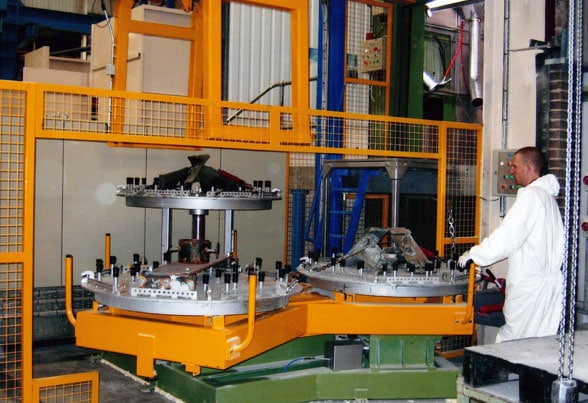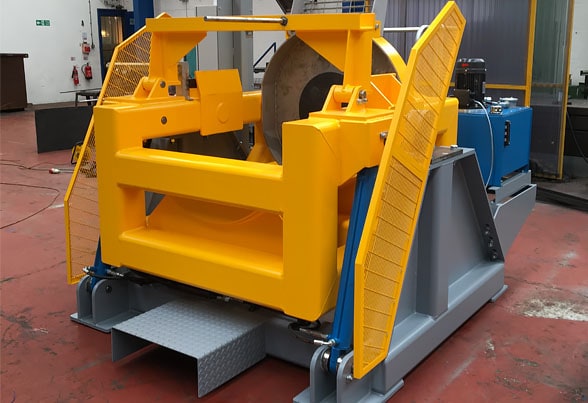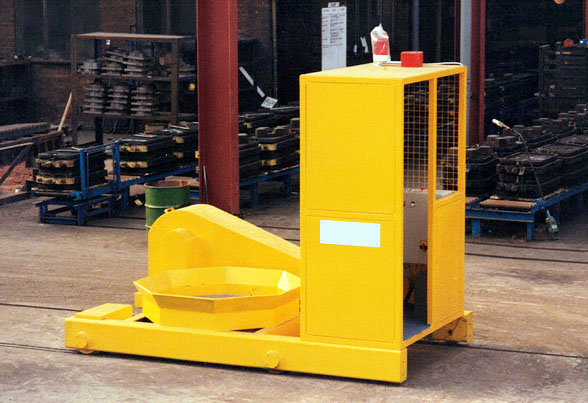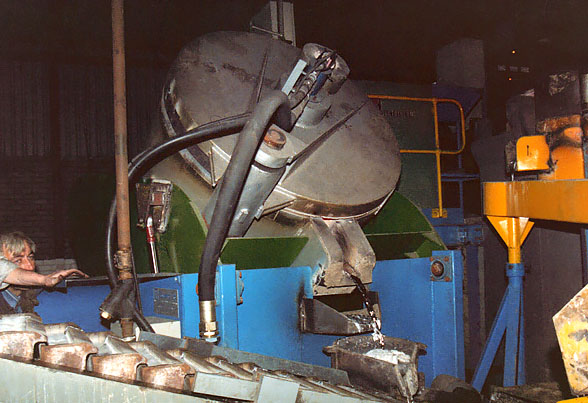Mechanical Handling
 Crucible Scraping
Crucible Scraping Furnace Additions
Furnace Additions Heat Treatment Furnace Quenching
Heat Treatment Furnace Quenching General Mechanical Handling
General Mechanical Handling Ladle Tilters
Ladle Tilters
For all manufacturing processes there are mechanical handling requirements. Foundry Projects Limited are general mechanical engineers which for us means that we apply our huge knowledge and experience to create the unique bespoke solution to meet a client’s particular requirements.
Some types of equipment we supply are standard as a proven concept in the industry whereas others have to be created from scratch so the range and variety of equipment we can provide seems to be endless. Certainly in the foundry industry, equipment such as this will be abused by the very nature of the process and the working environment so this is paramount to all of our designs. Some key areas where many of our mechanical handling activities are focused include the following:
- Heat Treatment Furnace Quenching Systems
- Ladle Tilting Systems
- Furnace Addition Systems
- Crucible Scraping Systems
- Part Rotating Devices
- Manipulators
- Monorail Transfer Systems
Crucible Scraping
 Crucible scraping system during useShow Full Screen
Crucible scraping system during useShow Full Screen Crucible scraping system in preparation to useShow Full Screen
Crucible scraping system in preparation to useShow Full Screen
Foundry Projects Ltd provide a semi-automatic system where the crucible is located into a tilting cradle which secures the crucible and tips it through 90˚.
The crucible then continuously rotates slowly and at the same time a hydraulic operated scraping arm goes into the crucible at high level until reaching the base of the ladle and lowers so scraping the base of the ladle. The arm then retracts to scrape the crucible sides and drag the dross into a skip at the front.
This operation is repeated several times until the desired objective is reached to remove the dross.
Furnace Additions
 Batch hopper feederShow Full Screen
Batch hopper feederShow Full Screen Automated batch weighing discharge systemShow Full Screen
Automated batch weighing discharge systemShow Full Screen Automated batch weighing discharge systemShow Full Screen
Automated batch weighing discharge systemShow Full Screen
Foundries are continually investigating options to both reduce melt cycle times and also to minimise any manual intervention which are the main benefits of installing a Furnace Addition System.
For a typical system we would be looking at integrating several hoppers each having their own conveyor to feed into a common weighing receptacle which discharges into a means of transport to the final destination.
The system can be fully automatic to create many batch recipes as required.
Heat Treatment Furnace Quenching
 Water and oil quench tanksShow Full Screen
Water and oil quench tanksShow Full Screen 10t capacity furnace loaderShow Full Screen
10t capacity furnace loaderShow Full Screen Furnace loader during assemblyShow Full Screen
Furnace loader during assemblyShow Full Screen Quench tank in workshopShow Full Screen
Quench tank in workshopShow Full Screen Furnace loaderShow Full Screen
Furnace loaderShow Full Screen
We can supply the complete quenching system or any part of it.
A complete system basically comprises of one or more quench tanks, a method of lowering the parts into each tank and a method of loading and unloading the quench furnace.
Time is of the essence for quenching so we need to be able to supply the quickest method to remove the items from the furnace and get to the point where the part is fully immersed in the quench bath.
The largest system we have built to date is to accommodate a single batch of parts weighing a total of 10T.
General Mechanical Handling
 Duplexing channel furnaceShow Full Screen
Duplexing channel furnaceShow Full Screen Part process handling systemShow Full Screen
Part process handling systemShow Full Screen Silver ingot casting carouselShow Full Screen
Silver ingot casting carouselShow Full Screen Hot metal slewing transfer launder Show Full Screen
Hot metal slewing transfer launder Show Full Screen Part turnover deviceShow Full Screen
Part turnover deviceShow Full Screen Tipper loading and furnace charging systemShow Full Screen
Tipper loading and furnace charging systemShow Full Screen Magnesium die casting head assemblyShow Full Screen
Magnesium die casting head assemblyShow Full Screen Vertical casting bogieShow Full Screen
Vertical casting bogieShow Full Screen Rotary furnace slewing doorShow Full Screen
Rotary furnace slewing doorShow Full Screen
Ladle Tilters
 Ladle transfer bogieShow Full Screen
Ladle transfer bogieShow Full Screen Ladle transfer pouring system in workshopShow Full Screen
Ladle transfer pouring system in workshopShow Full Screen Ladle transfer pouring system in workshopShow Full Screen
Ladle transfer pouring system in workshopShow Full Screen Ladle transfer pouring systemShow Full Screen
Ladle transfer pouring systemShow Full Screen Aluminium pouring stationShow Full Screen
Aluminium pouring stationShow Full Screen Aluminium pouring stationShow Full Screen
Aluminium pouring stationShow Full Screen
The systems we provide can be static or mobile and the pouring action would be by a hydraulic system.
The pouring cycle can be manual or automatic with a very fine control and typically we would offer lip pour but sometimes a metal throw is beneficial.
There are options to consider such as lid mounted burners in order to minimise temperature loss which can especially be important when pouring alloys.



Foundry Equipment & Products